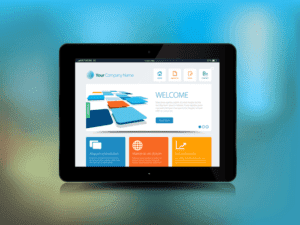
Disparate systems https://omitarahunting.com/2025/10/06/ch-5-multiple-choice-principles-of-accounting-2/ lead to duplicate orders, missed payments, or untracked liabilities. Centralizing all purchase orders and invoices into a single system helps maintain control, reduce errors, and streamline audit trails. Late or missed payments don’t just hurt relationships, they can damage a company’s credit profile.
Accounting for Interest Payable: Definition, Journal Entries, Example, and More
- It requires tracking raw material costs, supplier contracts, and delivery schedules.
- Accrual in accounting is a process that records revenue and expenses when they’re earned or incurred, rather than when cash actually changes hands.
- Automating your trade accounts payable process can save you time, reduce the chance of human error, and keep your business in good standing with suppliers.
- Accounts payable at the beginning and end of the year were $12,555 and $25,121, respectively.
- Let us look at some of the key benefits of trade payables in accounting.
- The credit period for trade payables is generally between 30 and 60 days.
And two important components of this are trade accounts payables and trade receivables. Mismanagement of trade payables in accounting can lead to financial instability, damage supplier Travel Agency Accounting relationships, and result in additional costs that can hurt your bottom line. Modern accounts payable automation solutions can revolutionize the management of trade payables. These tools offer benefits such as reduced processing times, minimized errors, and enhanced compliance.

Treasury Management

It specifically refers to any amounts owed expected to be paid within one year or less (usually due in 30 to 60 days). Additionally, Accounts Payable could refer to the department responsible for these expenses. The accounting entry for trade payables involves crediting the accounts payable account and debiting the relevant expense or asset account, depending on the nature of the transaction. Your trade receivable is the total amount receivable for the products or services that you provide. Here we’ll get to know trade payables, how they differ from their opposite (trade receivables) and how to account for them properly to ensure harmonious cash flow. The two are essentially a mirror image on a company’s balance sheet—AP is a current liability, while accounts receivable is a current asset.
Started Business with Cash Journal Entry
While payroll is not included in AP, it appears on the balance sheet as another of the business’s current liabilities. Negotiate mutually beneficial payment terms with suppliers to align with the businesses cash flow cycles and optimise working capital. Ensure that all invoices and transactions are promptly recorded to maintain accurate and up-to-date trade payable balances.

Buying Office Supplies on Credit
- Trade payables are short-term expenses incurred by businesses when they use products or services from a third-party vendor or supplier to deliver their products to their customer.
- If a purchase is paid for immediately with cash, it is not considered a trade payable because no debt is incurred.
- Most of the time, company regulations are clear on the threshold based on percentages, and accounts need to cross to be separately disclosed on the balance sheet.
- Once validated, the invoice is entered into the accounting system and scheduled for payment based on its due date.
- Maintaining a healthy relationship with suppliers is vital for long-term business success.
- Learn what trade payables are, how they work, and how to manage them effectively using modern tools and best practices.
Though similar in many ways, these two terms have different meanings and significance when managing business finance. Understanding the difference between these two terms is essential for effective financial management of your company. These examples highlight how trade payables facilitate day-to-day business operations, allowing companies to obtain necessary supplies and services without immediate cash outflows. The terms of repaying the money owed to suppliers can be unique for each supplier. For example, a company may need to pay within 15 days, 30 days, or even 90 days. Some vendors may offer a custom payment schedule, allowing one to make payments at regular intervals for a predefined period that does not exceed 1 year.

Trade payables are a crucial component of a company’s accounts payable and play a significant role in managing cash flow and maintaining healthy vendor relationships. Trade payables refer to the amount a company owes its suppliers for goods or services purchased on credit. These are short-term liabilities that appear on the balance sheet under current liabilities.
Supplier negotiations can also impact trade payables, longer payment terms may increase short-term liabilities while improving cash flow. Seasonality plays a role, with businesses accumulating more trade payables during peak periods to meet what is trade payable higher demand. In slower periods, businesses may delay payments to maintain liquidity, affecting cash flow. For companies in Singapore dealing with international suppliers, currency fluctuations can increase or decrease the value of trade payables, depending on exchange rate movements.
What is the Impact of AP on the Cash Balance?
- Managing trade payables effectively helps finance teams shift from reacting to issues toward making proactive, confident decisions about cash flow and vendor management.
- The amount the customer owes for the coffee gets recorded under accounts receivable.
- These systems can automatically match purchase orders, receipts, and invoices, flagging inconsistencies for review.
- This reporting provides a view of a company’s short-term liquidity and operational performance.
- On the other hand, Trade Receivable represents the amount of money owed to a company by its customers for goods or services provided on credit.
- Until the invoice is paid, the amount is recorded as a trade payable on the company’s balance sheet.
All trade payables are accounts payable, but not all accounts payables are trade payables. A low DPO indicates that a company is paying its bills to suppliers quickly, which may suggest that the company is managing its cash flow effectively. A low DPO is considered to be a positive sign for a company’s financial health, as it shows that the company is able to pay its bills in a timely manner.
Review vendor performance
While AP is the money a company owes to its vendors, accounts receivable is the money owed to the company by its customers. Trade payables specifically relate to debts for goods and services purchased on credit as part of a business’s core operations. Other types of liabilities differ in their source, formality, or duration. Automation has reshaped trade payables by reducing manual work and improving accuracy. Modern software streamlines invoice processing, approvals, and reconciliation, giving finance teams more control and efficiency.
